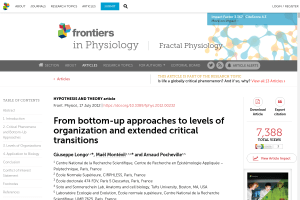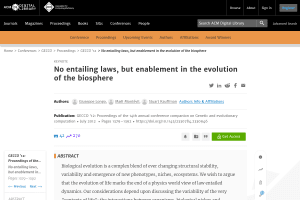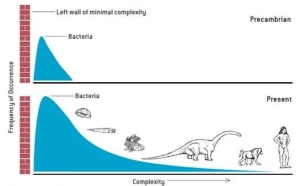
From bottom-up approaches to levels of organization and extended critical transitions
Frontiers in Physiology
Critical phenomena disrupt the mathematical determination at a given level by couplings between scales, leading to a new perspective on levels of organization.
Abstract
Biological thinking is structured by the notion of level of organization. We will show that this notion acquires a precise meaning in critical phenomena: they disrupt, by the appearance of infinite quantities, the mathematical (possibly equational) determination at a given level, when moving at an “higher” one. As a result, their analysis cannot be called genuinely bottom-up, even though it remains upward in a restricted sense. At the same time, criticality and related phenomena are very common in biology. Because of this, we claim that bottom-up approaches are not sufficient, in principle, to capture biological phenomena. In the second part of this paper, following the work of Francis Bailly, we discuss a strong criterium of level transition. The core idea of the criterium is to start from the breaking of the symmetries and determination at a “first” level in order to “move” at the others. If biological phenomena have multiple, sustained levels of organization in this sense, then they should be interpreted as extended critical transitions.
Keywords: bottom-up, extended criticality, levels of organization, organism, renormalization, singularity






